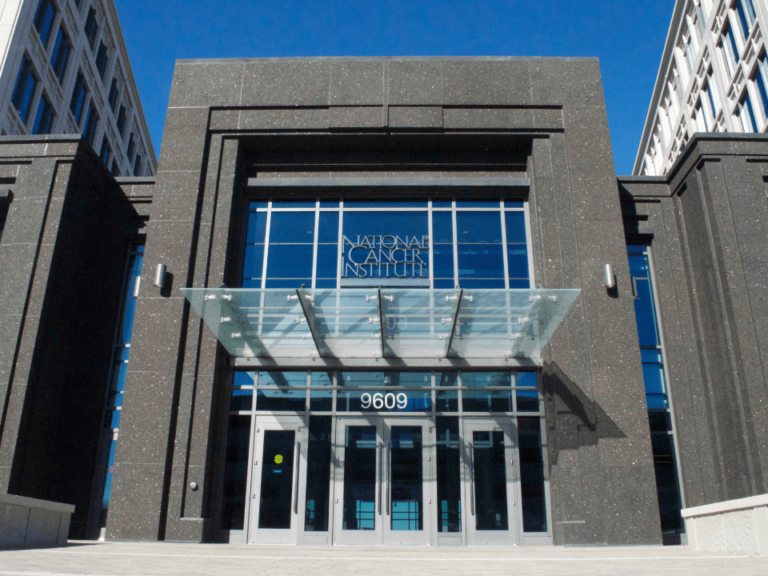Recently, Peter Tunney, an artist who runs two galleries in the Wynwood Walls Park in Miami, provided artwork to wrap an RV that Sylvester Comprehensive Cancer Center will use to take cancer interventions to Little Haiti, Liberty City, Little Havana and LGBTQ neighborhoods.
Though one artist can do only so much to confront a social problem as massive as health disparities in the U.S., Tunney is a part of a massive artistic movement.
Call it street art, mural art, untrained art, or graffiti, it’s arguably the largest art movement in history.
Social justice isn’t an abstract concept to street artists. “I have an army of artists who have participated with us in Wynwood, and many are dispatched on their own projects. Sometimes we ask them to participate in new projects with us,” said Tunney, who also runs two galleries in TriBeCa.
“If I asked you to name me ten impressionists—ten—you’d have a hard time. You’d run out at about five or six. If I asked you to give me five big pop artists. Well, Andy Warhol, Roy Lichtenstein, Robert Indiana, then you gotta start thinking. There’s usually a few at the forefront of every movement.
“I believe now there’s over a million of ‘street artists’ in the world. They’re all coming from a place of social activism. We do all have equal rights, but we’re not treated equally.”
Tunney spoke with Paul Goldberg, editor and publisher of The Cancer Letter.
Paul Goldberg: I have a big question, and I might as well start with it. What is the role that you as an artist can play in addressing social problems in today’s America?
Peter Tunney: Well, good for you. That is the big question. It’s one that I live with.
Every artist can define their role their own way. Most of the “street artists,” which is a name I don’t love anymore, spend a lot of their time thinking about this question. Their goals are not to become multi-millionaires. Their goals are to change the status quo in certain places on Earth.
I am so grateful just to be here, and breathe the air, and be alive, I’m just compelled to help people who are still suffering. It’s not a thankless job, but it’s heavy lifting.
You’ve got to be a lifelong warrior. I consider myself in service for the rest of my life.
How did the opportunity to help Sylvester with the outreach van project materialize?
PT: I had a meeting with Erin Kobetz. She came here to pitch me, to talk me into lending some of my time and human energy.
About a half a sentence into it, I said, “Erin. I’m going to save you the whole spiel. I’m in. What do you want me to do? I’ll do it.”
She was kind of taken aback.
I said, “I mean it! What do you want to do? Give me your dream scenario, and then I’ll see if I can execute it.”
She gave me her scenario, and I said, “I’ll do an original painting. We’ll sell the painting. That money will go to Sylvester. We’ll make prints. The money from the prints go to Sylvester and your projects. Who’s going to buy that? A doctor, a lawyer, a philanthropist; right? They will end up hanging it up in their office with pride. It’s going to say “Game Changer.” They’re going to refer to it. It’s going to be in the dialogue in that lawyer’s office and that philanthropist’s kitchen.”
In fact, that’s exactly what did happen.
They came to me with the words “Game Changer,” and the history of Sylvester center, and cancer going back to Nixon, and I gobbled all that stuff up.
When we were done and that van pulled up, that was an exciting moment for me. It was so cool to see the manifestation of that artwork on that van, and it sparked a lot of dialogue from the second it pulled up.
What is this? Who is Sylvester? I got to meet Stephen Nimer. What a guy! Who’s going to say no to that guy? We need 10,000 guys like that. We’d change the world. I’ll do whatever he says.
In dealing with people like Erin Kobetz and Dr. Nimer, I get leverage. I give them a little bit of my human energy, and they turn it into 100 orders of magnitude more stuff.
My guess is that van’s probably going to roll to some neighborhood, and someone that wasn’t responding to normal outreach says, “Well, I’ll go get tested. That’s cool. That looks fun. That looks funny. Everyone’s crowding around it.”
That’s probably going to trickle down, those dominoes will fall, and lives will be changed for the better.
What’s better than that?
What does “Game Changer” mean here? Is it your word? Is it their word?
PT: They came to me with “Game Changer.” I’m going to steal it, co-opt it, and do other works that say “Game Changer,” because I just love it.
It’s interesting, because they were also playing with translations, which is a thankless task. It’s so Anglo, the concept.
PT: It’s a real Americanized thing, “Game Changer.” We had to translate it into many languages, which was also their idea, which I though was genius. They may not have a perfect translation, but nothing’s perfect. Who cares?
What’s the game? How do you change it?
PT: I think the game is the accepted-by-default status quo. Changing the game is literally waking up to a little bit of perspective. The real game changer is when we open our minds, when we can have an open mind to look at things differently.
Your mind will get opened when it happens to you; right? When your aunt that you loved, or your mom, or your brother, or your son gets diagnosed with cancer, and your life changes on that phone call—never to be the same again—your game is changed.
You’re going to go through what everyone goes through, which is grief, anger, denial, and then—helping others. That’s the path we take. We’re just people. We get sick, and we’ve got to take care of each other.
It’s so easy; right? It’s so easy.
Cancer is a political problem, though, which is why I’ve been covering this for so long and not getting tired. The Game Changer van is going to communities that were badly served by science, or what passed for science. Think of Henrietta Lacks, or Tuskegee. How do you overcome the distrust? I think that’s where the artist has to come in.
PT: Well, it’s where we would hope the artists come in, and we would like them to come in harder. Remember, the role of the artist, for me, is not to solve the problem. The role of the artist, specifically, is to articulate the problem and bring it to your attention.
I’m not going to solve cancer, but I may be able to get people to think about something differently, whether it’s mental health, wrongful incarceration, or cancer, which are the areas I’m involved in.
We just want to get a little dialogue in front of your face, let you think about this for one minute of your busy day. There’s people around you that are suffering from something you don’t have to suffer from, because you’re in a more privileged position.
There’s a political aspect to art, or can be—and should be. Think, for example, of Bread and Puppet Theater and their buses. At political protests, Bread and Puppet uses buses as puppets. And here you are with this Game Changer van, and you are using it as a puppet.
PT: The van is a puppet. That’s right. It’s an extension… I can’t go drive the van every day. I’m just one guy. I’m always looking for leverage.
You are addressing the Tuskegees and so forth, and the mistrust towards science, because how can anyone not trust a puppet? Tell me if this is a crazy question.
PT: Well, we trusted Sesame Street puppets; right?
Yeah.
PT: Listen, a puppet is a vehicle. A billboard is a vehicle. A giant mural is a vehicle.
I know that you use the New York Post in your collages a lot, but Miami is really different. There are so many languages used, and everyone’s speaking at the same time. Is there a common language of art that enables you and your puppet to communicate within, say, Little Haiti, or Liberty City? Is it the same language or is it a different language?
PT: I use text a lot; right? I just got back from Dubai, and this artist eL Seed uses Arabic text. He studied Arabic. He didn’t know it. He started studying it when he was, like, 20. He loves the calligraphy, and the beauty of this text.
He was doing this big wall right at the base of the Burj Khalifa, in the center of Dubai, just the most massive construction site on the planet. I think about this one little human being pulling it all together, adding the human element to this incomprehensible construction site. He is adding the soul to the sea of glass, steel and concrete.
I said, “Why are you starting over there?”
He said, “I write right to left.” I didn’t even think of that. It was so beautiful, I was forgetting there was a message in there. I don’t know how many people are going to be able to read that message. I could not read that message. It had to be read for me.
When you’re using text, there’s always a level of translation.
Right.
PT: The Wynwood Walls—there’s very little text in here. One guy, Pixel Pancho, has robots and foliage that he mixes into his art. He is really against deforestation on the planet. That’s what he does, that’s his flag.
A lot of people come here and do a selfie in front of it, because they like pink or whatever. That’s going to happen, too.
On the whole, I think art, like music, is the universal language.
Are you going to be on the Game Changer bus at some point?
PT: At some point, I’d be happy to go there and be on it, if they feel that is a productive thing for me to do.
I will go spend a day with them on the van, sign stuff, give stuff away. My role, normally, is I’m a funny eccentric person, and that’s just the way of engaging people. It’s better than being a stiff, dry person.
Right.
PT: I don’t like to add to the negativity. I could put up billboards that say the world is going to hell in a hand basket, but they’ve already got that covered. I’m just on the positive side.
A lot of time people get it wrong. I put up a New York City billboard that says, “Welcome to the CITY OF DREAMS.” That’s where I live.
I just want to show you the other side.
I’m going to have an opportunity to do a big show in Washington, D.C., that I can’t tell you about. Very visible and very public. Everyone thinks I’m going to go down there and do this big anti-Donald Trump thing, which is way too obvious for me. Here’s a quote for you, “Art is never obvious.”
My show’s going to be called something like, “Beautiful, Beautiful World.” I’m going the other way, man!
What are you going to do with the next several puppets? Because the folks at Sylvester say they’re going to have some more.
PT: I don’t know anything about the future, but I’ll do whatever they ask me to, and then try to add my own unique kind of mojo into it.
Just in defense of what we did here, we did this little event in my gallery in Wynwood Walls, about 100 people for cocktails, the unveiling of the van. Their whole team, by the way, is just aces. No clunkers in the crew, from the guy taping the thing on the van to the smartest doctor there, they were all rowing the same boat.
There was dialogue. There was money raised. There was awareness. There were questions. “Peter, why would you be involved in this cancer thing? Do you have cancer?” You know, all this kind of stuff.
Oh, absolutely.
PT: It was in the context of the Wynwood Walls, with the truck parked outside.
Where was it?
PT: There was nothing here.
Right in front of the Wynwood Walls—that street was one of the most blighted streets in the middle of the worst neighborhood in Florida. There was nothing here but despair and violence.
And now we have the Game Changer van and Dr. Stephen Nimer here, and Erin Kobetz talking about cancer treatment.
The amount of people that they’ve been able to attract to Sylvester, I read somewhere, 140 doctors or something. That’s a lot of talent. You can’t do any of these things by yourself. You need Dr. Steven Nimer to be compassionate and smart with his patients. You need Erin Kobetz. You need the guy who cleans the floors at the hospital. Without the janitors, you cannot operate your hospital. Period.
Well, you’re working with Sylvester, but other cancer centers could probably use some of this experience. What would be your advice to Steve Nimer’s counterparts at other cancer centers?
PT: Send me an email.
You would work with others as well?
PT: I have an army of artists who have participated with us in Wynwood, and many are dispatched on their own projects.
Sometimes we ask them to participate in new projects with us.
I’m doing a project now for the Innocence Project and the Sunny Center, which take care of wrongly incarcerated people after they finally get out.
Only about 6 percent of exonerees get money. Most just get, like, a bus ticket and $20, and they’ve been in jail for 29 years under horrible conditions. I feel it must be our responsibility to take care of the exonerees.
Well, how about art for health disparities?
PT: For sure. I can’t do every program. I can’t do everything that they ask, but I pick my spots. I picked Game Changer. I picked Sylvester. They asked me. I was their first choice. I was impressed.
They walked into the door of my gallery. I give a lot of credit for showing up. They showed up, and I’m like, “What can I do for you?”
I’ve been saying since November 2016 that this is actually a good time for American artists.
PT: I think so.
Because they’re giving us material.
PT: Yeah. Martha Cooper, who’s been photographing street art for a long time, said, “Little did I know when we were running from the police after tagging something, and I was photographing them, that I would be photographing the beginning of the largest art movement in the history of mankind.”
Those words really struck me, and I’ve co-opted those words often. I believe that the street art, mural art, untrained art, whatever category you’d like to call it, is, in fact, the largest art movement in the history of mankind.
If I asked you to name me ten impressionists—ten—you’d have a hard time,” Tunney said in a recent conversation. “You’d run out at about five or six. If I asked you to give me five big pop artists. Well, Andy Warhol, Roy Lichtenstein, Robert Indiana, then you gotta start thinking. There are usually a few at the forefront of every movement.
I believe now there’s over a million of these street artists in the world.
They’re all coming from a place of social activism. We do all have equal rights, but we’re not treated equally. That’s the basis, that’s the big movement. I think you’re exactly on point.
That doesn’t mean that they’re having a great time. Many of these artists I know have lost friends and family members to everything you can imagine. In the street art community, I bet we know a lot of people that have overdosed, that have killed themselves.
It’s really a difficult road to be an artist, but I think you’re right. It is a good time to be an artist.












